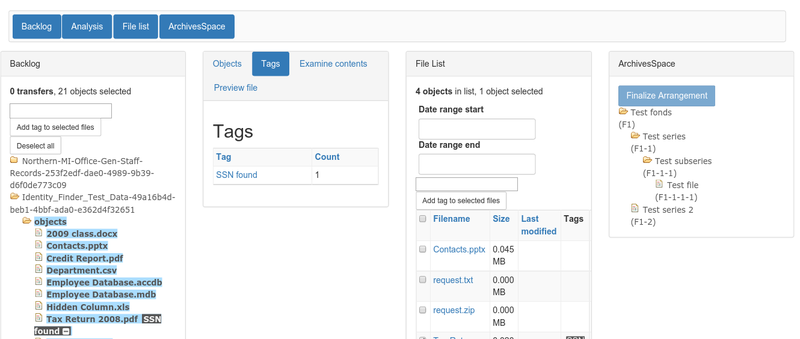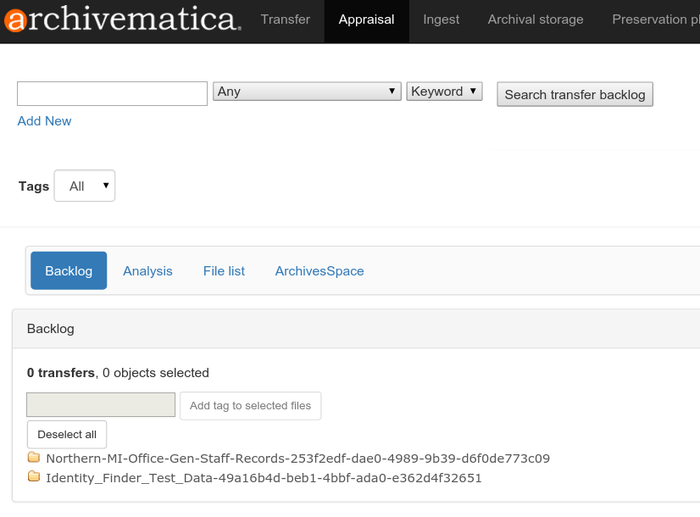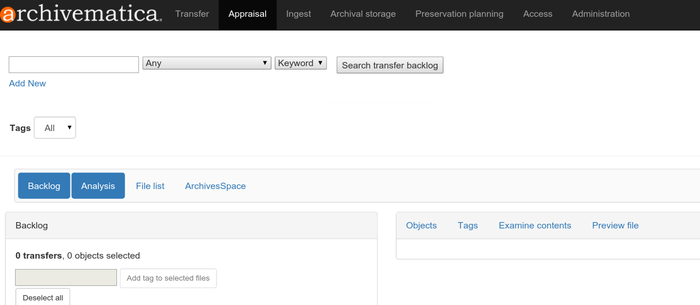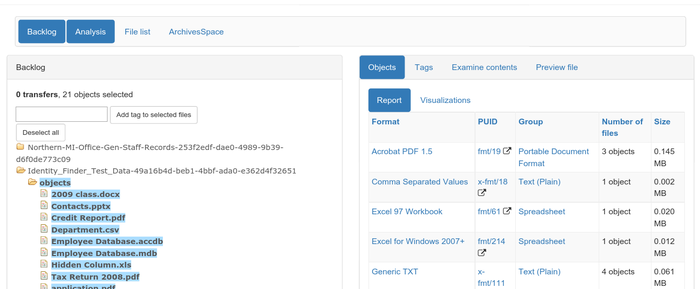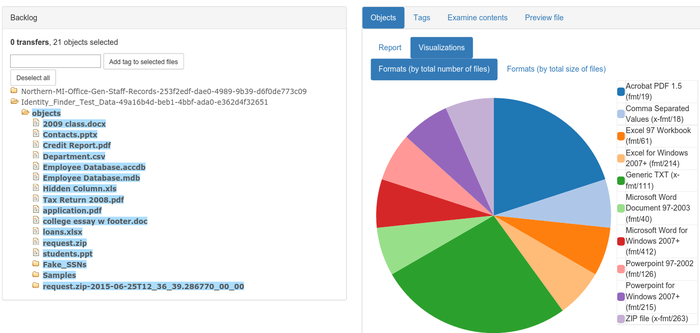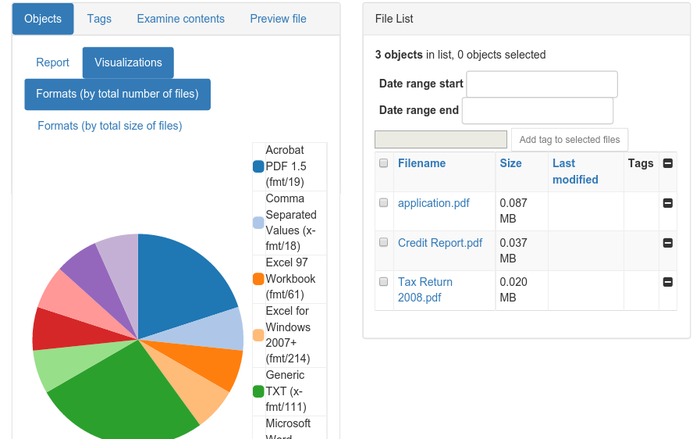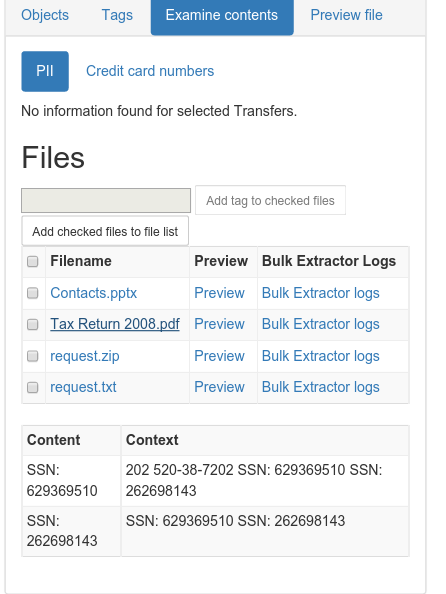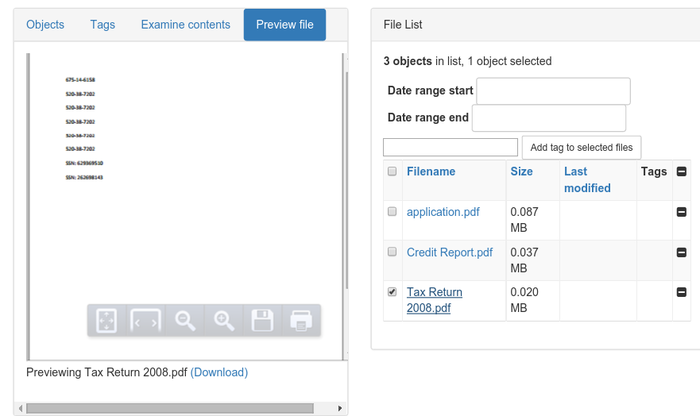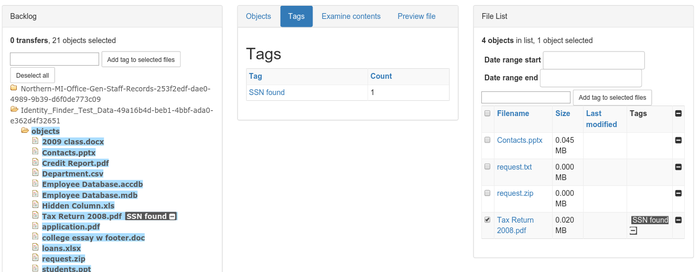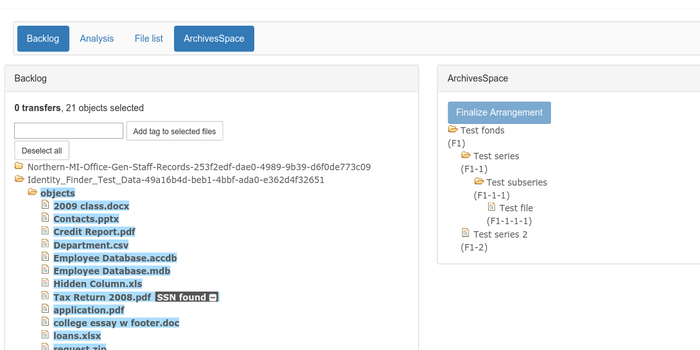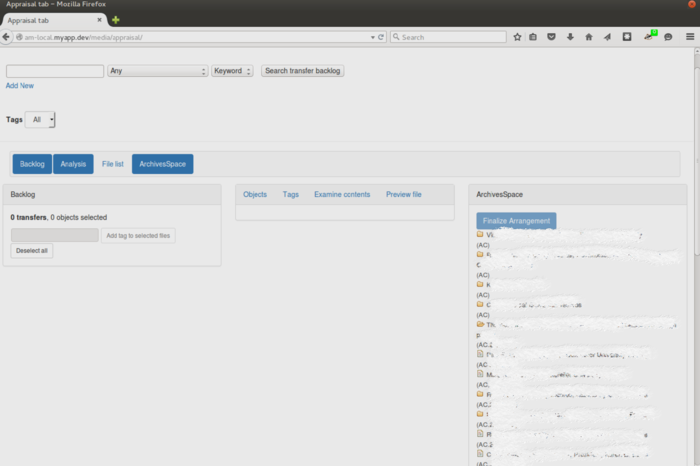Difference between revisions of "SAA 2015 Demonstration and Feedback"
| Line 105: | Line 105: | ||
<br> | <br> | ||
[[Image:ATab-ArrangementSimple.png|700 px|center|ArchivesSpace arrangement]] | [[Image:ATab-ArrangementSimple.png|700 px|center|ArchivesSpace arrangement]] | ||
| + | <br> | ||
| + | |||
| + | Here is a screen shot showing an actual ArchivesSpace instance (data blanked out) | ||
| + | |||
| + | <br> | ||
| + | [[Image:Aa_tab_ASpace_blank.png|700 px|center|ArchivesSpace arrangement with real data]] | ||
<br> | <br> | ||
Revision as of 09:45, 20 August 2015
Main Page > Development > Requirements > ArchivesSpace integration > SAA 2015 demonstration and feedback
About this page
Archivematica, ArchivesSpace and the Bentley Historical Library are hosting a brown bag lunch at the Society of American Archivists' conference in Cleveland. During the session, the hosts will show a prototype of the newest enhancements to the Archivematica/ArchivesSpace integration workflows to gain public feedback. This page contains instructions for installing the prototype for testing, as well as a public link to access a hosted version of the prototype. Any notes and feedback from the session will ultimately recorded here.
Public document
- Artefactual will share a public Google document from the day of the Brown Bag session until the end of August 2015, at which time the document will be closed and its content moved to this wiki page.
- Public Google document for feedback and note sharing for in-person and virtual attendees.
- Here is a Google form to register your interest in following this work or participating in future testing
Hosted prototype link
- Please note that the prototype has been tested in Chrome and Firefox browsers only. Multiple users may cause UI inconsistency during the demo.
Prototype installation
- Download and install the Appraisal Tab prototype using Artefactual Labs's github [1]
- To deploy:
- Clone this repository.
- Install node.js (or io.js) and npm.
- Inside the repository, run npm install.
- Run npm start.
- This will launch a web server running the application, which can be accessed at http://localhost:8000/app/.
- Please note: One user had a little trouble with the third step (receiving "weird error" and "not ok" messages). This was resolved with a legacy version of nodejs. You may also have to use a different port for the app, since the Archivematica Storage Service may already be using it if you have it installed.
Using the features
Toggling
The design of the appraisal tab is based on the idea of having different "panes" which you can toggle on and off as needed. When the tab is loaded, the Backlog and Analysis panes are loaded. Clicking on the other pane options (File list, ArchivesSpace) will load those panes; any pane can be removed from view by clicking again.
Features
1. Search the backlog for transfer content. This works similarly to searching for content in the Ingest tab of current versions of Archivematica.
2. Select a folder from the backlog search results. You can choose an entire transfer, a folder within a transfer, or individual files.
2a. Click on Analysis button to see report of file types and sizes. Toggle between Report and Visualization to see the format information either as a table, or as a pie chart.
To see the following functionality toggle on the File list pane.
2b. Click on format type to populate file list with files of that format. If viewing in Visualizations, clicking on a wedge of the pie chart will populate the file list with files of that format.
2c. Use the File list to select/deselect files and add tags (more about tagging below).
3. Back in the Analysis pane, click on Examine Contents tab to see BulkExtractor log content for PII and CC numbers. Note: adding additional BulkExtractor reports, and how to choose which ones, is under discussion.
3a. Click on a file name to see a tabular view of content and surrounding context from the BulkExtractor report.
3b. Click on preview to load the preview of that particular file. If your browser does not have the appropriate viewer for the file, you can download it to view using software installed on your local machine.
3c. Click on Bulk Extractor Logs to download the logs for local analysis.
3d. Select files and click "Add checked files to the file list" if desired.
4. Click on Preview file. Choosing the file to preview can be performed from the File list. If your browser has a viewer for the format, it will appear in the format screen, and all files can be downloaded locally for viewing in the Preview pane.
Tagging
The File list can be used to select chosen objects for tagging. Applying tags allows you to populate the Backlog pane with only tagged content of your choosing. Possible use cases for tags include:
- Tag everything that you plan to arrange in a specific series or file.
- Tag sensitive or restricted content as you identify it through analysis.
- Apply tags as a simple "aide memoire" while processing- it's like a virtual post-it note.
Arrangement to ArchivesSpace (coming soon)
This functionality will mirror the current arrangement feature in Archivematica's Ingest tab. In this case, however, you will be able to link transfer content to specific ArchivesSpace resources. You can toggle to this functionality in the prototype, but it is not yet a working part of the demonstration.
Here is a screen shot showing an actual ArchivesSpace instance (data blanked out)
